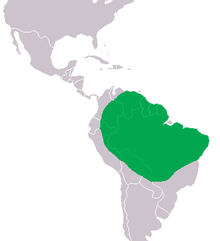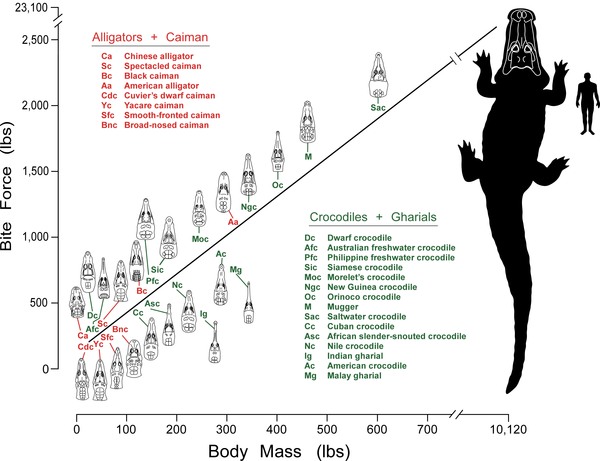Post by Ceratodromeus on Mar 30, 2015 23:17:27 GMT 5

Scientific Classification
Kingdom: Animalia
Phylum: Chordata
Class: Sauropsida
Order: Crocodilia
Family: Alligatoridae
Genus: Paleosuchus
Species: Paleosuchus palpebrosus
Description
Cuvier's dwarf caiman is a relatively small species of crocodilian that has a distinct dark brown, gray, or even black body with a brown head. Large white bars can be found situated on the lower jaw, making this caiman easily distinguishable from other caiman species, and a well sought after species for the pet trade to do its aesthetically pleasing nature.There is alot of misconception with regards to the actual size of the species, being drastically understudied and with some errors being made. Though it is indeed a small crocodilian, it is not nearly as small as once reported to be(I.e. the ~1.6 meter maximum for males and ~1.2 meter maximum for females). As a matter of fact, one study published in 2010{1} found the largest individuals of this species to measure out to 2.1m(6.8ft) in males and 1.4m(4.7ft) in females. The highest mass recorded for the species was a 37kg(81.5lbs) male.
Distribution
P. palebrosus inhabits the freshwater rivers and flooded forests of the Amazon, and have also been noted to inhabit the Orinoco river.They prefer fast moving streams, and have been known to excavate and utilize burrows which is a unique behavior in caiman.caiman. They've been recorded to inhabit Bolivia, Brazil, Colombia, Ecuador, French Guiana, Guyana, Paraguay, Peru, Surinam and Venezuela, where they coexist but do not compete in a significant degree with the smooth fronted caiman and Orinoco crocodile.

Dietary habits
These small crocodilians are generalistic feeders, feeding on just about anything that fits in their mouths. The primary food source they're sympatric with is primarily fish and crustaceans, so it's no real surprise these make up the bulk of its diet. For their size, they do have impressive jaws.
and in regards to P. palebrosus' bite force, here are the results from Erickson et. al

The skull of this dwarf caiman is often described in the literature as 'dog like', as it is short and somewhat robust -- say in comparison with the sister taxon P.trigonatus, which has a more elongated skull.
Breeding
Unfortunately, there is not a whole lot of data in regards to the copulation/ breeding habits for this crocodilian. They can be found in pairs(male/female) for the majority of the calendar year. Females are known to make a large mound, consisting of mud and vegetation to incubate their clutch(which ranges from 8-25 eggs). Incubation lasts around 90 days. When they young hatch, they range from 6- 9 inches long and have a coloration akin to that of their parents.

Reference
{1} Campos, Zilca, Tânia Sanaiotti, and William E. Magnusson. "Maximum size of dwarf caiman, Paleosuchus palpebrosus (Cuvier, 1807), in the Amazon and habitats surrounding the Pantanal, Brazil." Amphibia-Reptilia 31.3 (2010): 439-442.







